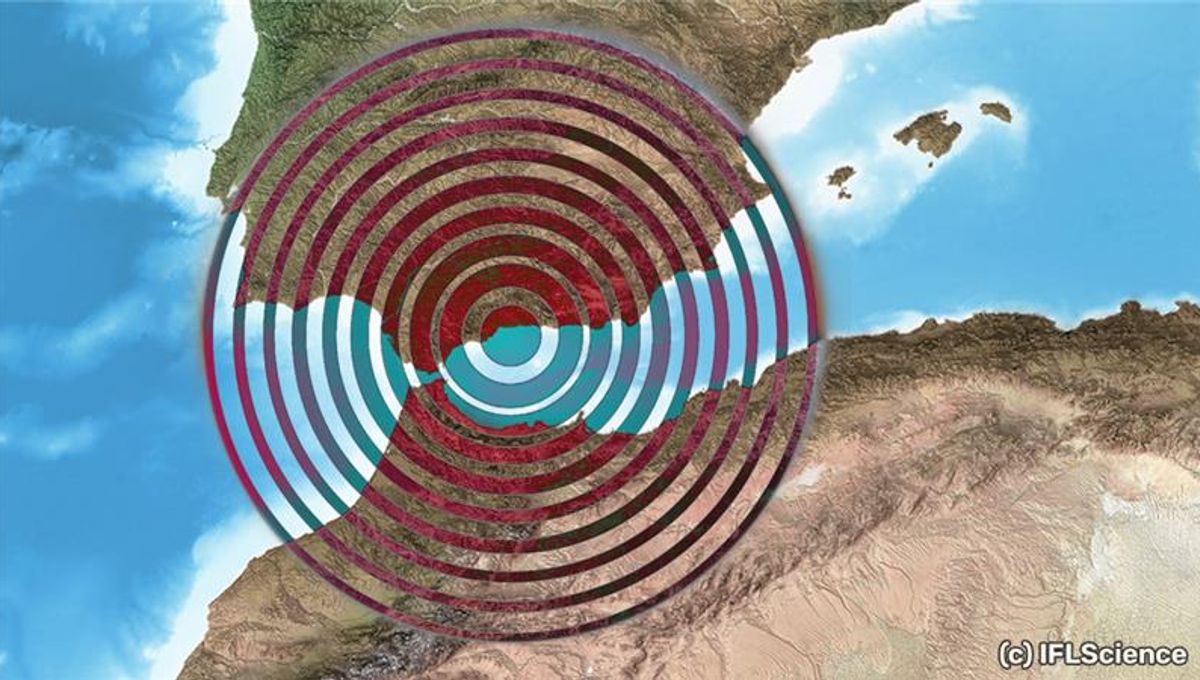
In April 2010, an unusual magnitude 6.3 earthquake occurred below Granada, Spain, sending out weird seismic waves that were picked up by monitoring stations in Spain and Morocco. Now, researchers believe the unusual seismic signals were caused by a large piece of the ocean crust that sunk into the Earth’s mantle and completely flipped over in the process.
According to the research, conducted by Daoyuan Sun of the University of Science and Technology of China and Meghan S. Miller at the Australian National University, the waveforms from the earthquake indicate that a subducted oceanic slab had descended rapidly into the Earth’s mantle and flipped over. This meant that the water it carried on its surface was now beneath it.
Although these findings seem strange, the hope is they will actually help researchers better understand the complicated tectonic structure of the point in the western Mediterranean basin where Africa and Eurasia converge.
In particular, they hope the research will shine new light on the region called the Rif-Betic-Alboran region, which contains an arc formed by the Betic mountain ranges in Spain and the Rif Mountain ranges in Morocco, as well as the Alboran Sea basin, east of the Straits of Gibraltar.
In addition, the study may add to our understanding of the mechanisms behind the rare deep earthquakes that sometimes occur more than 600 kilometers (373 miles) below the region.
Sun and Miller noted that the earthquake’s coda waves – the signature of residual vibrations at the end of a seismogram – lasted an unusually long time after the quake in 2010. These vibrations were picked up by the monitoring stations in Morocco. There were also signs of what they refer to as a late-arriving “extra” Primary wave (P-wave) phase – pressure waves that travel faster than other waves through the earth, and so are detected first – that followed the normal initial P-waves captured by stations in Spain.
“Initially, we were not aiming to better understand the deep earthquake mechanisms, as several prior studies have studied the source nicely. Our intent was merely to plot the waveforms out of curiosity, since there is so much to learn from individual waveforms when one takes the time to look at them closely,” Sun explained in a statement. “Upon examination, we observed these strange arrivals, including the long coda and extra phase.”
The team concluded that the long coda and extra P-wave phase are likely explained by a low-velocity layer at the base of the subducting Alboran slab. Low-velocity layers, which slow and absorb seismic waves, often suggest that the waves have passed through melted or liquid material.
Subduction slabs can contain a low-velocity layer on their surface which comes from the water they take into the mantle.
“Here, through modeling the detailed waveforms, we are able to image the low-velocity layer underneath the slab surface dipping to the northeast, unlike a normal subducted slab with a low-velocity layer on top of the slab surface,” Sun added. “This strange occurrence between the slab and low-velocity layer suggests the occurrence of the overturned Alboran slab.”
This study is the first to assert that the slap has been overturned, rather than simply standing vertically or steeply dipping.
The low-velocity layer may also explain the deep earthquakes around Spain. This is because it indicates the presence of hydrous magnesium silicates, which carry water at depths of 600 kilometers (373 miles). Once these silicates dehydrate, they become brittle in a way that can lead to deep earthquakes.
The hydrous silicate may also tell seismologists more about the speed of the slab subduction in the region. The hydrous magnesium silicates mean that “a significant amount of water has been carried down to the mantle transition zone, indicating a relatively cold slab,” Sun noted.
“Considering a relatively young sea floor age in the western Mediterranean, for the slab to remain cool, the subduction speed must be quite fast, such as a moderate speed of about 70 millimeters [2.8 inches] per year,” he added. “In other words, we think our study could offer a reasonable lower bound of the speed of subduction in this region.”
The team believes it would be useful to investigate the seismic waveforms produced by deep earthquakes in other places, such as northeastern China, South America, Sunda-Banda, and places like the Fiji-Tonga region. This would help identify whether they experience similar mechanisms. However, this would require dense seismic stations deployed across the areas where the earthquakes occur – this is less likely to happen.
The study is published in the journal Seismic Record.
Source Link: Weird Seismic Signals Identified In 2010 May Hint At Upside-Down Ocean Crust